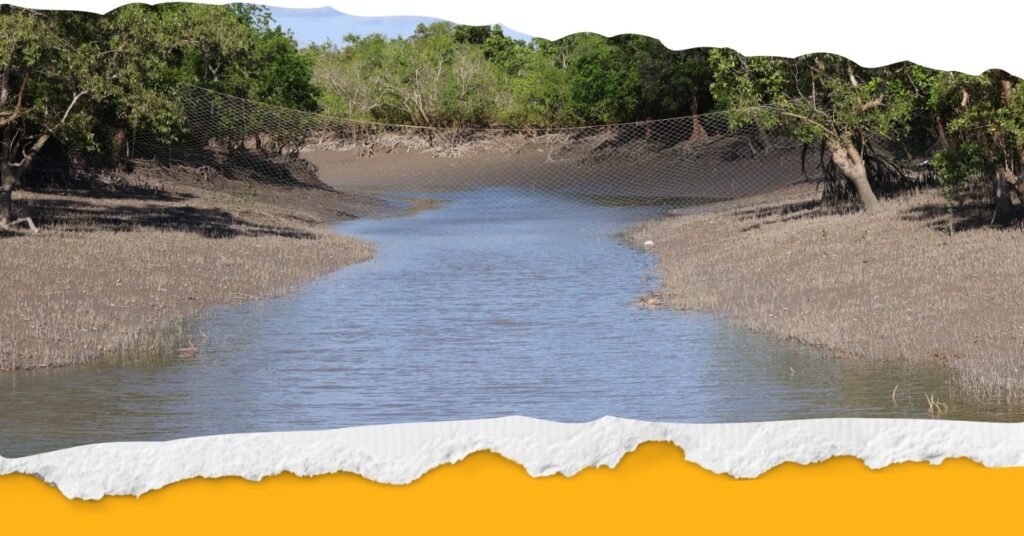
Climate in Sundarban – Sundarban Tour Planner
Climate plays a very crucial role for Sundarban tourism! Based on the prevailing climate in Sundarban, visitors can decide the peak season or the off-season to book their Sundarban tour packages.
Come winter, Sundarban regains its pristine beauty, and once again starts attracting tourists from all over the country. Temperature reaches a comfortable point wherein visitors can enjoy a pleasant Sundarban tour.
Also, as this sundarban region is located in the southern part of West Bengal at sea level and surrounded by salt water rivers and dense mangrove forests, it experiences high humidity and occasional cyclonic weather at monsoon and summer. Heavy rainfall and waterlogging during certain months affect Sundarban Tourism; most of the forest zones and boat routes become inaccessible during this season.
Monsoon in Sundarban is characterised by substantial rainfall accompanied by thunderstorms at certain places. Planning a Sundarban tour during this season might prove challenging for outsiders unfamiliar with the terrain and river conditions.
Here is a month-wise breakage of Sundarban’s climate to help you out while planning for a Sundarban tour:
July to September
Starting from July to September, Sundarban undergoes the wrath of the monsoon in the most piercing way! Rainfall increases drastically; river levels rise during the nights and remain high throughout the days. Owing to the heavy rainfall and tide conditions, access to almost the entire forest area becomes difficult, and the region goes on a temporary pause from regular tourism activities.
Places to visit in West Bengal
Things to do in Sundarban
Sundarban Tour Packages
While many boat routes are closed or unsafe during this time, extreme nature enthusiasts still travel to Sundarban to witness its wild, untouched form. July to September is not at all close to being called the best time to plan a Sundarban tour!
October to November
As October starts approaching, rainfall reduces and the weather gets more pleasant than that of September. The region usually experiences 30°C during the daytime and around 22°C during the nights. However, as November makes its mark on the calendar, temperature in Sundarban drops slightly more; it is the beginning call of Sundarban tourism!
Places to visit in Sundarban
Things to do in Sundarban
Sundarban Tour Packages
December to February
During this period of the year, Sundarban welcomes its winter season with all its charm and glories! With the receding of monsoon effects, almost all the boat routes and forest zones become operational and make Sundarban accessible to the outer world.
With the sun shining gently overhead, the entire region starts getting cooler eventually and flaunts its beauty in the most enchanting ways. Temperature during the daytime reaches up to 26°C and brightens up the ambience. The mercury level drops further to around 15°C with the advent of January and showcases a unique charm across the mangrove forest.
Though Sundarban tourism ticks the calendar in November itself, it reaches the peak in December and festivity continues till February.
This is also the time when Sundarban celebrates most of its local festivals and cultural programs, allowing the visitors on their Sundarban tour to unravel its rustic charm and appeal. With festivity everywhere, Sundarban tourism casts a magical spell on the visitors during these three months.
Come February end, the climate in Sundarban starts changing. Both days and nights start getting warmer with a rise in the mercury level. This makes February the last month for peak Sundarban tourism; most of the Sundarban tour winds up with the advent of March, and visitors can be seen packing their bags and continuing with their return journey.
March to June
March knocks down the tourism season in Sundarban by bringing up the mercury level further. As temperature starts rising again, the region starts experiencing hotter and more humid weather, and within a couple of weeks, the daytime becomes too sultry for comfortable forest exploration.
By the end of May and into June, most travelers avoid visiting due to the heat, and the pre-monsoon rains begin to show up. The number of tourists reduces, and tour operators prepare for the upcoming monsoon shutdown.